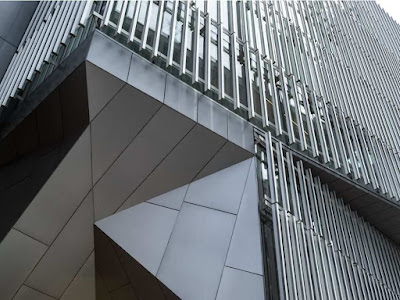A few months ago I got my hands on "Collage with Color", a book by Jane Davies, published in 2005 and now out of print, but still available on Amazon. Some of the techniques suggested include
- sponging
- palette knife application
- spattering
- stenciling
- stamping
- brushstrokes
- spritzing and blotting
- drip transfer
- sgraffito
- gesso resist
- combing
- masking
- crayon resist and more!
I began by using paper from a sketchbook pad, though many of these techniques would also work on cloth. I also found an old jar of "clear gesso". A bit like modelling paste, this can be applied to the paper with a brush or a credit card, and then textures can be created by scratching, combing, or stamping into the wet product. Once dry, opaque and transparent pigments can be applied in a variety of ways to add depth and interest.
Here are a few of the collage papers I recently made:
 |
| clear gesso applied with brush in basketweave pattern; painted yellow and scraped; orange paint circles stamped on |
 |
| "sgraffito" technique with a comb dragged through clear gesso to create horizontal and vertical curves; yellow, then orange, paint applied and scraped |
 |
| Lego-type board pressed into wet gesso randomly, then dried; paint applied with sponge. |
 |
| comb dragged through wet gesso in basketweave pattern; paint applied then scraped off |
 |
| stamp pressed into wet gesso; finished with at least three colours of paint |
 |
| as above; the horizontal and vertical bands are made by scraping the surface with a credit card |
 |
| This one began when used as a blotter to lift paint from another paper. |
 |
| And this one began when a stencil loaded with paint was pressed onto its surface. More stamping followed. |
 |
| Transparency-on-transparency works its magic. |
Sometimes a little "mess-therapy" is just the diversion we need to get back into the studio. And it's always great to have a supply of interesting collage papers on hand for future projects.


























































